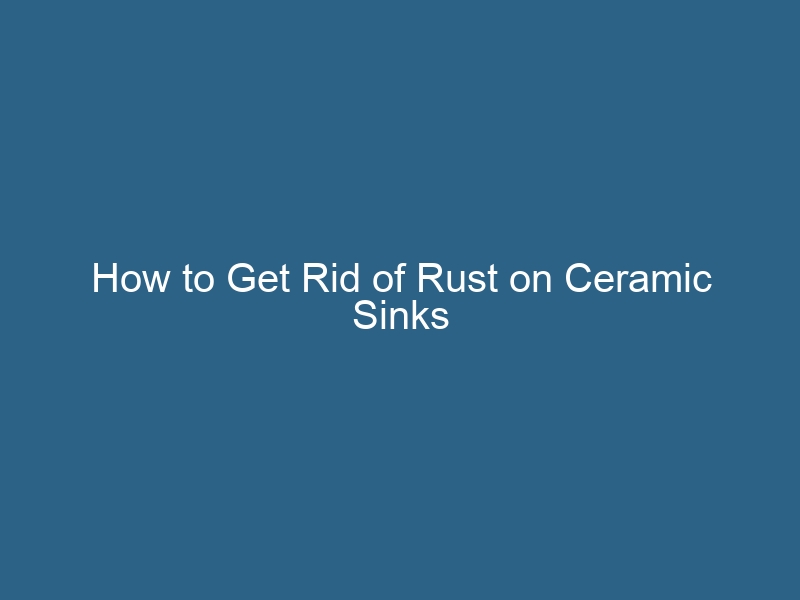Quck answer
Rust stains on ceramic sinks can be removed using a few simple household ingredients and tools. Here’s a step-by-step guide:
1. Mix equal parts of baking soda and water to make a paste.
2. Apply the paste directly onto the rust stains and let it sit for about 15-20 minutes.
3. Scrub the stains gently with a soft brush or sponge.
4. Rinse the sink thoroughly with water.
5. If the stains persist, make a solution of white vinegar and water (1:1 ratio) and soak a cloth in it.
6. Place the cloth over the rust stains and let it sit for an hour.
7. Scrub the stains again and rinse the sink.
By following these steps, you can effectively remove rust stains from ceramic sinks and restore their original shine.
Ceramic sinks, whether curved or straight-sided, can be an attractive focal point in the kitchen or bathroom. However, rust spots around the plug or on the apron of the bowl can diminish the natural beauty of the sink. Removing rust from a ceramic sink is not overly difficult, but it is important to use the right rust stain remover to avoid damaging the pristine ceramic surface.
Safety Precautions when Using Rust Removers
Removing rust stains from sinks in bathrooms and kitchens can pose safety risks. Often, these sinks are located in small spaces with limited ventilation. It is crucial to always wear gloves and safety goggles when scrubbing away rust, as this can create small particles that float in the air.
The fine particles in steel wool can irritate the skin and potentially fly into the eyes, especially when working in tight spaces. It is recommended to wear safety goggles and a good pair of canvas or work gloves when grinding away rust stains.
Working in small spaces can also expose you to paint fumes and overspray, which can cause respiratory issues. Strong cleaners and rust removers can accumulate and reduce clean air in these confined areas. It is highly advised to wear a particle mask when dealing with flaking rust spots on the smooth surface of ceramic sinks.
Natural and Basic Rust Removers
If a rust stain has been caused by a can of shaving cream, hairspray, or any other beauty product with metal edging, you can tackle the issue with household astringents. Simple and natural homemade rust removers can be used to clean up a rusty kitchen or bathroom sink drain.
Bob Vila suggests using a paste made of 2 parts cream of tartar to 1 part 3 percent hydrogen peroxide. This paste can effectively remove a light layer of rust without damaging the ceramic surface. Apply a thick layer of the paste with a damp sponge and let it sit for a couple of hours before wiping it away with a clean, damp cloth towel.
For a noncaustic and affordable rust stain remover, a fresh lemon and a layer of salt can work wonders on a newly formed stain. Another method is to sprinkle salt or baking soda on a cut half of a potato and rub it into the rust spot. For stubborn stains, let the treated potato sit on the spot overnight after rubbing it into the rusty area.
Rust Stains in Ceramic Sink
If the rust has caused significant damage, be prepared to invest time and effort into reversing it. To restore the sink to its former glory, you will need to remove the top layer of rust without harming the sink.
Light sandpaper can be used to remove the initial layer of rust and discoloration. For stubborn rust stains, steel wool can be used. Once the majority of the rust has been removed, apply an enamel repair product to prevent the rust from spreading due to moisture exposure in the sink. Finally, touch up any remaining signs of rust with epoxy or enamel spray paint.
If the area affected by rust is large or has been there for a long time and is difficult to remove, you can try using commercial rust removers. One option is to use a rust remover spray, like CLR. Simply spray it on the affected area and let it sit for a while. Afterward, gently wipe it off with a clean towel. To achieve a smooth and seamless finish, you can also consider using a tub-and-tile refinishing kit to cover any deep holes or chips in the sink bowl or along the apron.


